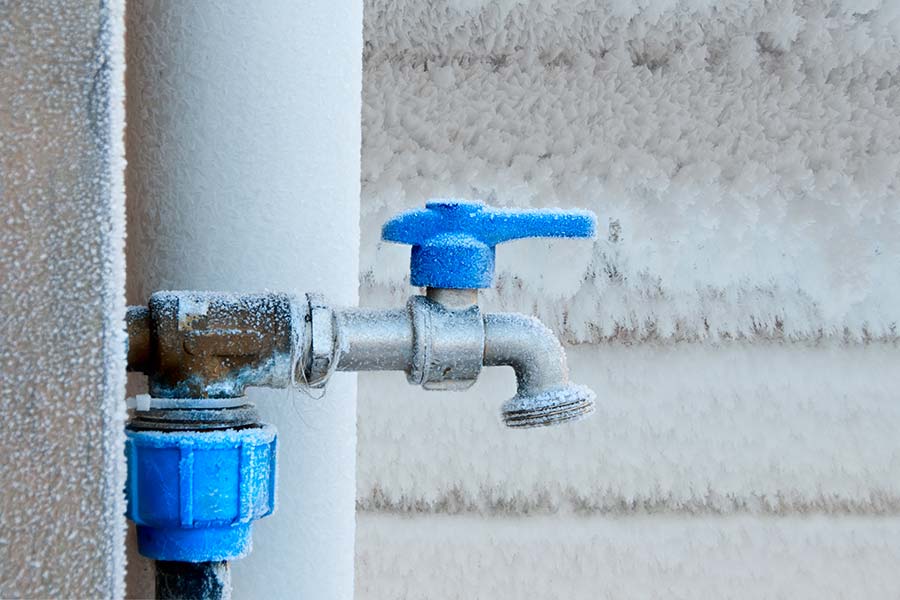We’re in the thick of winter here in Montana and that means we have a few months left of fluctuating temperatures and cold nights. With everything that’s been going on in the world, the last thing any of us want to deal with right now is frozen pipes. At best a frozen pipe means no water while it thaws, and at worst it means a cracked pipe, flooding, or plumbing damage. Read on to find out what it takes to prevent your pipes from freezing this winter.
One question we get from folks a lot in the wintertime is “how can I stop my pipes from freezing?”, and especially if their home (and plumbing) are a little older. Here are a few tips from our master plumbers:
Protect your pipes to prevent freezing before it gets cold
First off, let’s make sure your pipes are protected before the cold temps roll in. Wind chill and low temperatures can both lead to frozen pipes, and in Montana, we’re no strangers to either. Here are a few tips:
- Insulate your pipes properly – You’ll want to make sure pipes in the attic and crawl spaces are fully protected with insulation. You can also use heat tape on the pipes.
- Make sure your pipes are sealed – Fully sealed pipes are better equipped to deal with the cold temps. Take extra care of places where the pipes run from outside to inside, and be sure to seal or caulk any cracks.
- Check your outdoor pipes – Make sure any outdoor faucets are drained and turned off, and be sure to disconnect garden hoses and blow out your sprinklers before the cold sets in.
When it gets cold
Now that winter’s here, let’s make sure those really cold temperatures don’t cause your pipes to freeze or burst. As a rule of thumb, pipes can start to freeze when the temperature reaches around 20 degrees Fahrenheit, so if you see temps getting close to that in the forecast it’s time to get prepared.
- When you see a big temperature drop, start a slow drip of water in all of your faucets. Make sure you have a cold and a hot water drip.
- Consider shutting the water supply off to faucets and appliances— like the washing machine— in unheated interior areas like the basement or the garage. Up to 37% of all frozen pipes occur in basements, and this can happen even if the pipes thread through cabinets so it’s worth being careful.
- If you’re heading out of town for a few days see if a trusted neighbor, friend, or family member can check to make sure steps are being taken to prevent pipes from freezing.
If you think your pipes have frozen
It happens, and especially in the harsh Montana winters. Here’s what you can do:
- Turn on the faucet. If the water trickles or doesn’t run at all, the pipe could be frozen.
- Check the water line and look for any breaks or cracks.
- If you find any breaks or notice flooding, turn off the main water supply and call an emergency plumber so that they can assess and repair.
- If there are no breaks, you’ll want to thaw the pipes.
- Safety first! Check in with your plumber and don’t put yourself (or your pipes) at risk when you’re thawing out the pipes. Never use anything like a blow torch to thaw the pipe!
- Turn on the faucet to get a water flow going. This will slowly thaw the frozen pipe.
- For exposed pipes, warm the pipe up to melt the frozen water inside. Do this safely and gently, and consider using a heat pad or carefully placing a watched space heater near the pipe.
- For enclosed pipes, turning up the heat in your home and making sure doors are open to the frozen pipe area can help slowly thaw the pipe.
No one wants to deal with frozen pipes at the end of a long day, and the good news is that there are lots of ways to prevent your pipes from freezing. If you want to make sure your pipes are protected, if you have a burst pipe, or if you need a water heater repair, give us a call and we can help!
Schedule a consultation today.

